Setting up and grazing
9 min read
Prepare for a successful winter by identifying your environmental and animal welfare risks and making a plan to mitigate these.
There are several ways to prepare for the winter to ensure your team knows what to do to improve cow comfort. Weather can be variable, so always have a written plan for prolonged wet weather conditions and share it with your team. Transition cows onto winter crops gradually, allowing gut bacteria to adjust to new feed.
Lastly, make sure your plan allows your cows access to fresh water, enough space to rest comfortably and preferably take shelter. The use of directional grazing, back fences and portable troughs will reduce soil damage by limiting unnecessary cow movement.
Use the resource below to plan and communicate with your team this year's winter grazing:
Early preparation of your winter grazing paddocks minimises the risk of soil loss. Directional grazing towards waterways and swales helps to decrease soil and phosphorus losses.
The use of back fencing and portable troughs helps protect soil conditions to support cow lying time. Limiting soil damage during winter also means cultivation and re-sowing of new crops or pasture can occur earlier and with fewer cultivation passes.

Check in with national regulations and regional rules and milk processors for any changes to wintering requirements.
Get together with your farm team in early autumn while ground conditions allow and use the six steps below when considering winter grazing and then create your own grazing plan.
Where possible, graze the paddock towards the swales, gullies and waterways, leaving an ungrazed buffer to protect soil structure. Buffer zones or grass strips in and around swales, gullies and next to waterways will reduce soil loss. By preserving soil structure and preventing compaction from pugging, the runoff can efficiently soak into the soil.
Video: Managing critical source areas on a wintering block
Southland dairy farmer John Officer shares his tips on managing critical source areas and sets his paddock up for feeding cows crop during wintering.
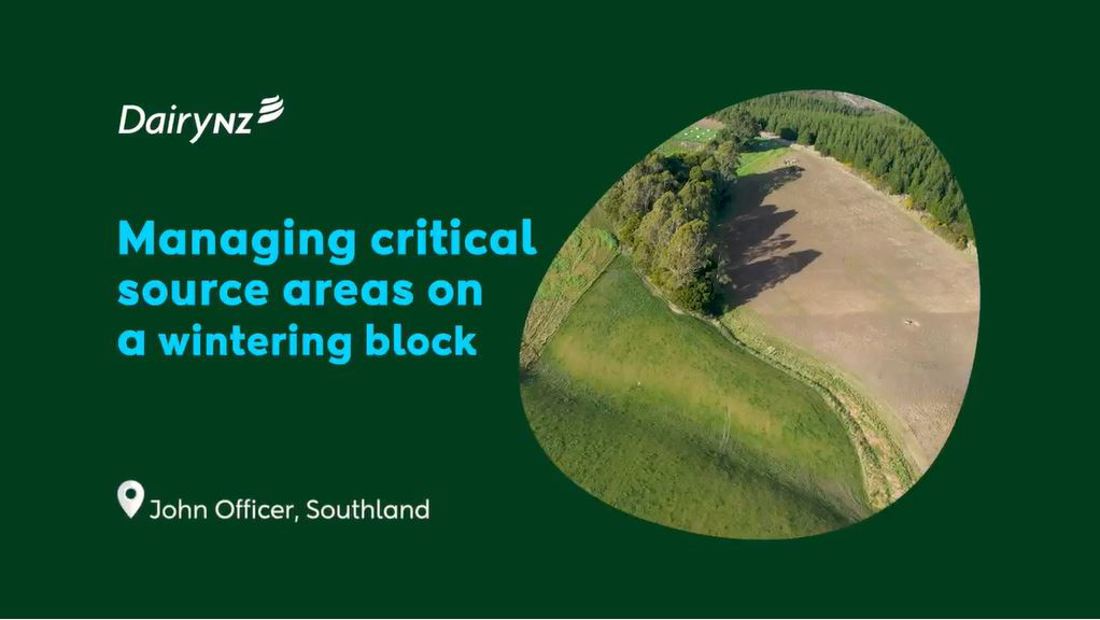
Crop is utilised more efficiently when long and narrow breaks are offered rather than wide shorter breaks as less of the crop is trampled. To ensure that all cows have access to the crop, there should be at least 0.7 metres of feed face per cow. If the paddock has a short feeding face, consider splitting the herd and feeding from both ends at the same time, rather than running the animals in one larger herd.
I plan how I am going to transition cows onto crop – I either leave the first 6m of the paddock in pasture, or work out how I am going to on off graze them for the first week, so they don’t get too much crop before their rumens adapt.
Farmer tip
In New Zealand, where pasture-based dairy farming is common, winter grazing on crops can present specific challenges due to cooler temperatures, reduced pasture growth, and potential for soil compaction and erosion during wet weather.
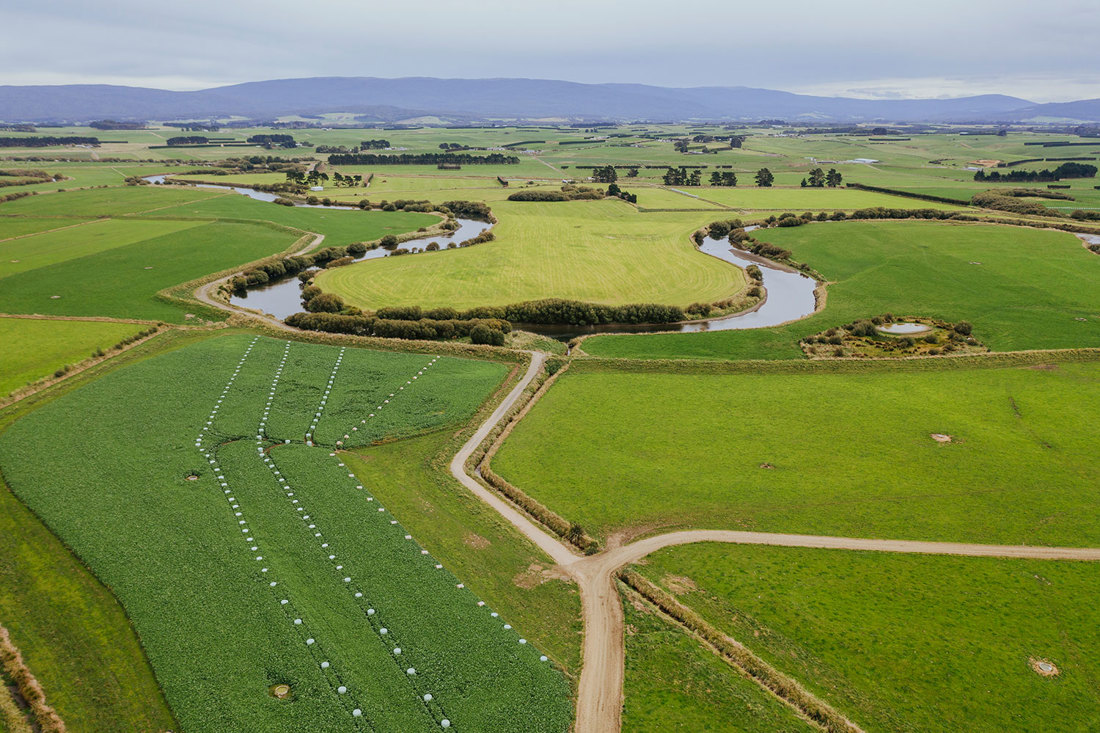
Directional grazing near waterways and careful management of swales can reduce losses of soil and phosphorus from the paddock. Directional grazing significantly lowered soil loss by 90 percent and phosphorous loss by 85 percent.
| Traditional grazing | Directional grazing |
| Soil losses: 6635 kg/ha | Soil losses: 656 kg/ha |
| Phosphorous: 6.9 kgP/ha | Phosphorous: 1.2 kgP/ha |
|
|
When planning your paddock, consider cow comfort and how you could provide shelter and well-drained lying surfaces. It might be better to graze across a slope with a large buffer at the bottom if grazing downhill would leave cows exposed to severe weather at the top of a rise.
Kale can provide shelter if the cows are grazing towards the prevailing weather. Bulb crops don’t act as a windbreak, but setting up the paddock so cows are pushed towards the back fence in poor weather protects the feed face and saves this drier area for cows to lie on.
Setting up the portable trough close to the feed face will reduce cow energy output from walking and limit soil damage through unnecessary stock movement. It will ensure easy access to fresh, clean water, which is required for all winter diets, and reduce the risk of a cow choosing to drink from a dirty puddle.
Good use of portable troughs
Dairy farmer Luke Templeton shares his top tips for using portable troughs well over winter.
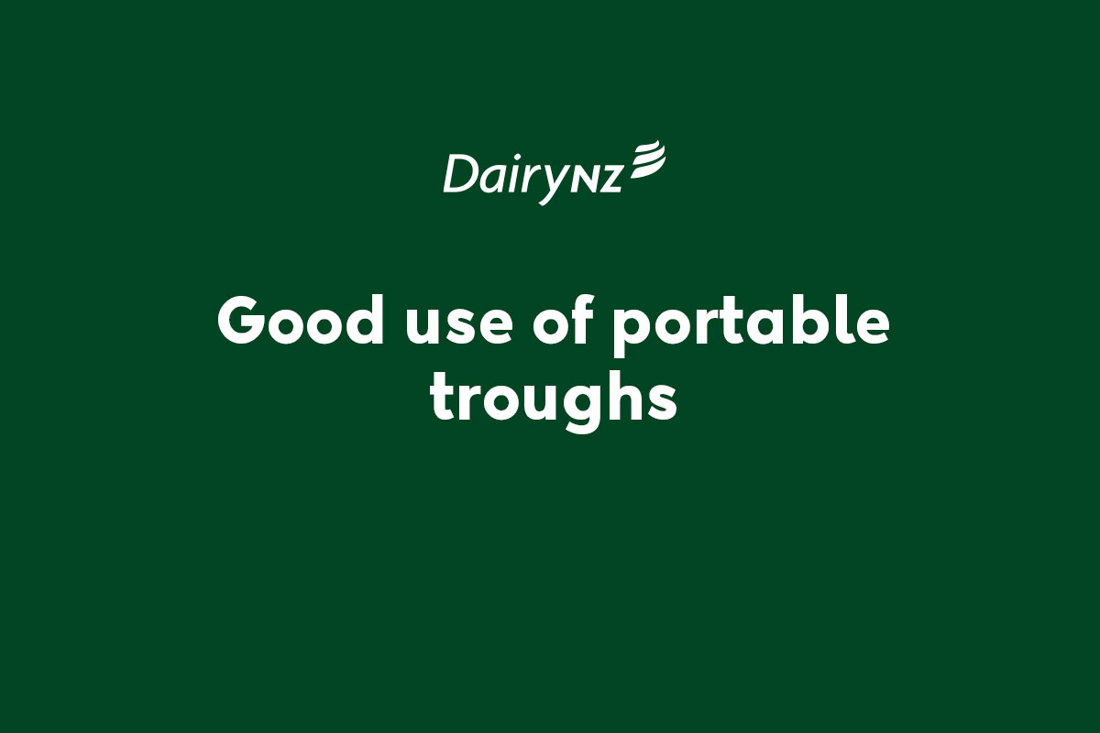
We use a portable trough with click-in water fittings and non-return valves. It is so easy to shift that the team do it daily. This way we know that our cows always have fresh water nearby.
Farmer tip
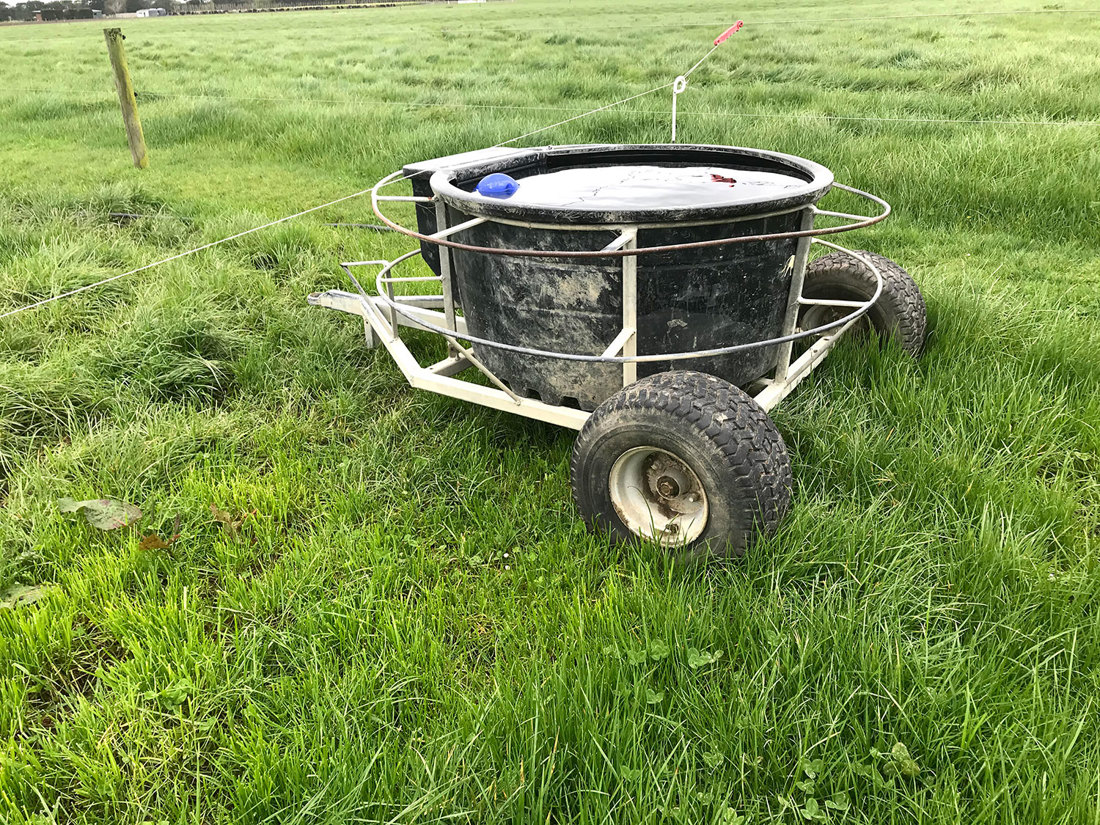
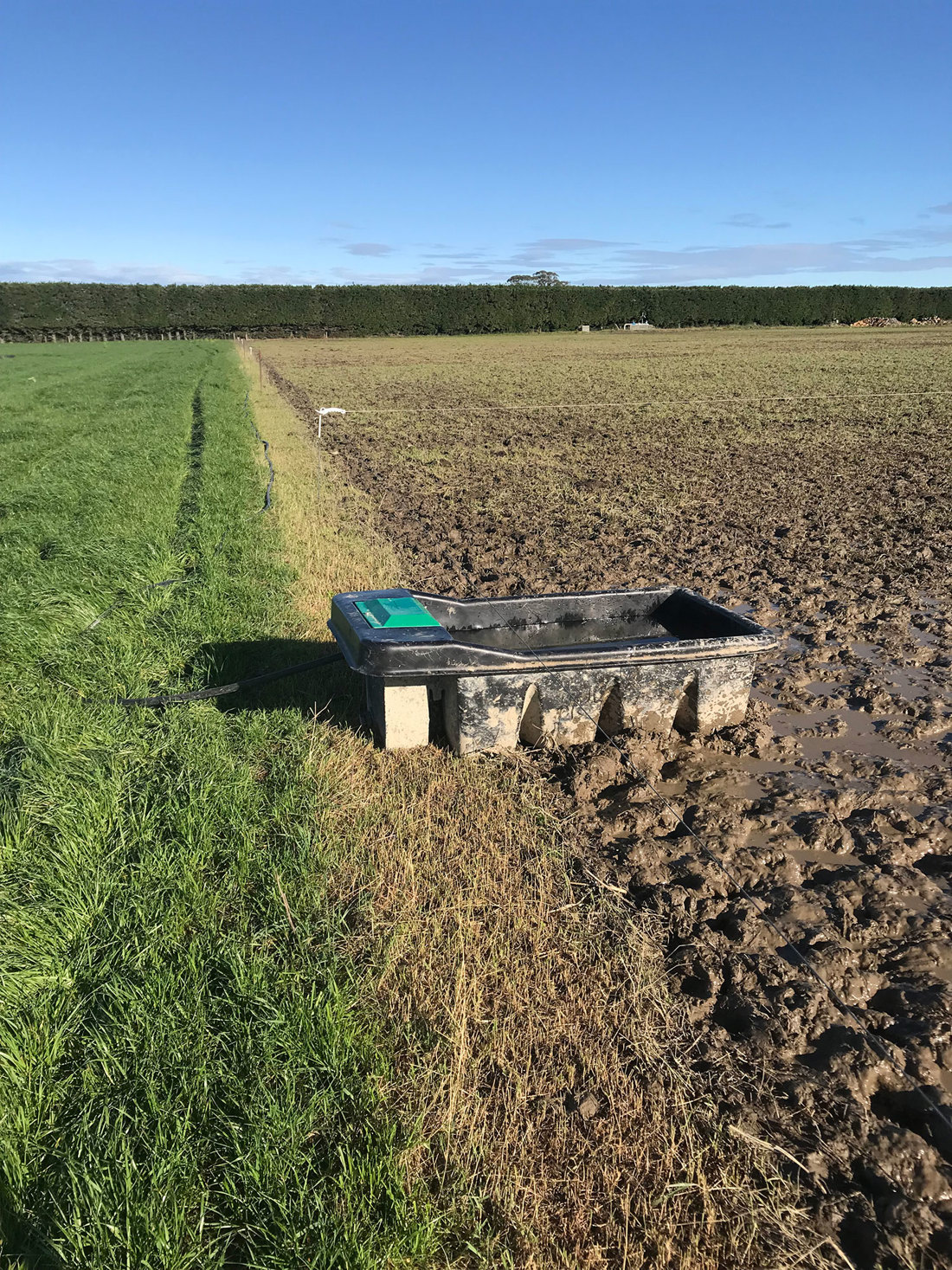
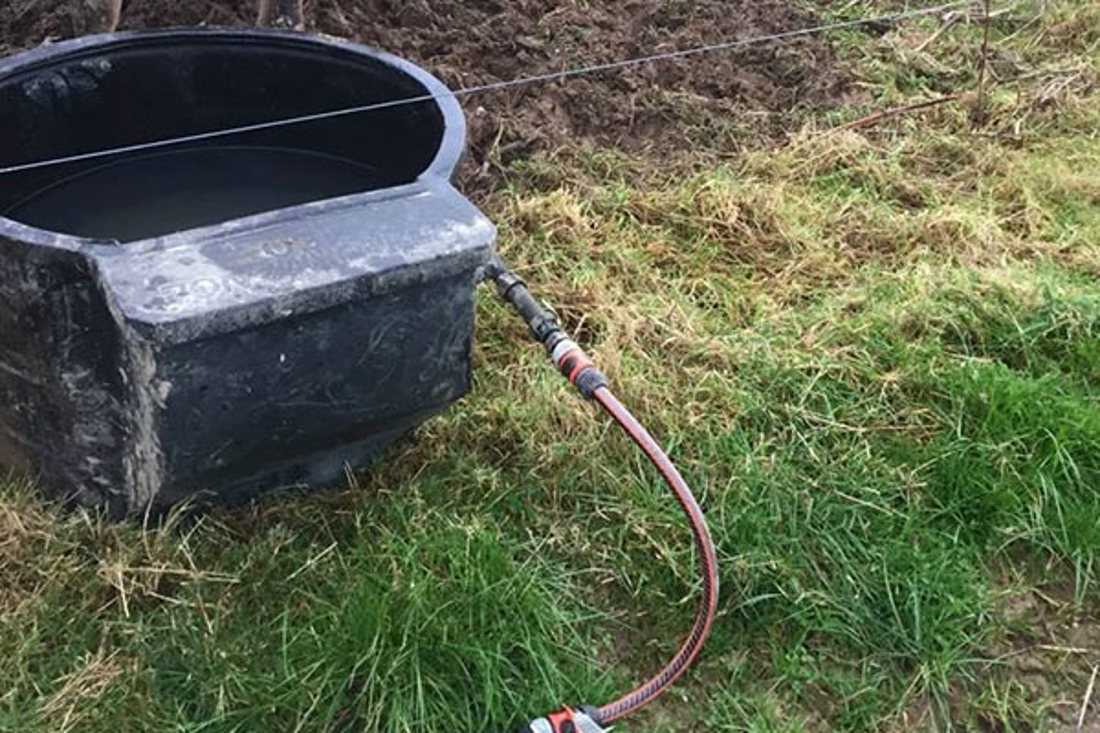
We run the portable trough hose from the neighbouring paddock and slide it under the fence to save moving the trough through mud.
Farmer tip
Regularly moving the back fence will reduce cows walking back and forth through previously grazed areas of the paddock, reducing soil damage caused by treading. Treading damage seals the soil surface, resulting in either more water moving across the soil (runoff), which increases the loss of soil and nutrients, or surface ponding.
Research from the Southern Dairy Hub has demonstrated that surface water negatively impacts cow lying time.
By protecting the ground behind a back fence during good weather conditions, the area can be used during wet weather conditions to increase the space for lying. Giving animals more space in the break means they can choose where to lie and, if available, where to take shelter, something that is important to cows.
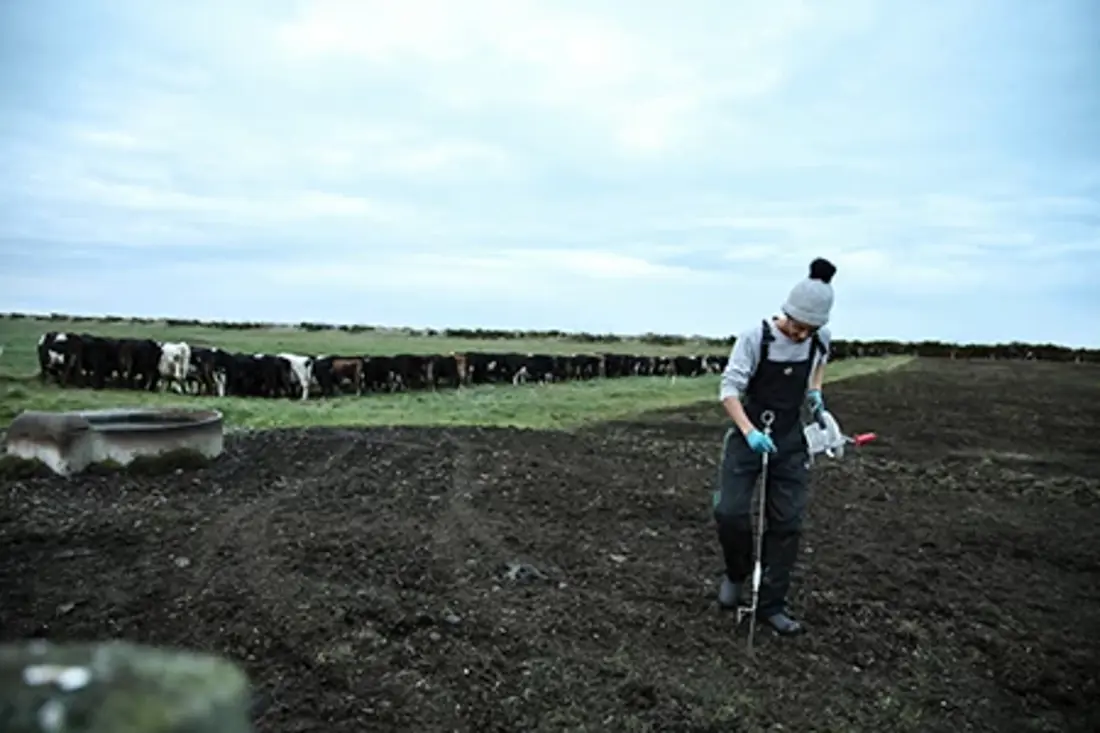
Allow cows to have sufficient room between the back fence and crop fence during winter grazing.
Back fences have been a game changer for us. Although it’s another job to do, it means that all stock are up at the feed face which saves energy, and if we need to get them out of the paddock, the back fence makes this much easier.
Farmer tip
During extended periods of wet weather where the paddock becomes too wet and muddy, it is essential to have a contingency plan. It's important that your contingency plan is written down, and you and your team know when to implement it.
Take into consideration the welfare of your cows, including shelter, the lying surface, and availability of appropriate feed. Consider the environment, including potential soil damage, runoff to surface and ground water, and any flood risk.
Make sure the plan can be easily implemented by the farm team, especially with staff likely to take time off over the dry period.
Some contingency plan options include:
Wet weather planning
Dairy farmer Luke Templeton shares his top tips for having a successful contingency plan over winter.
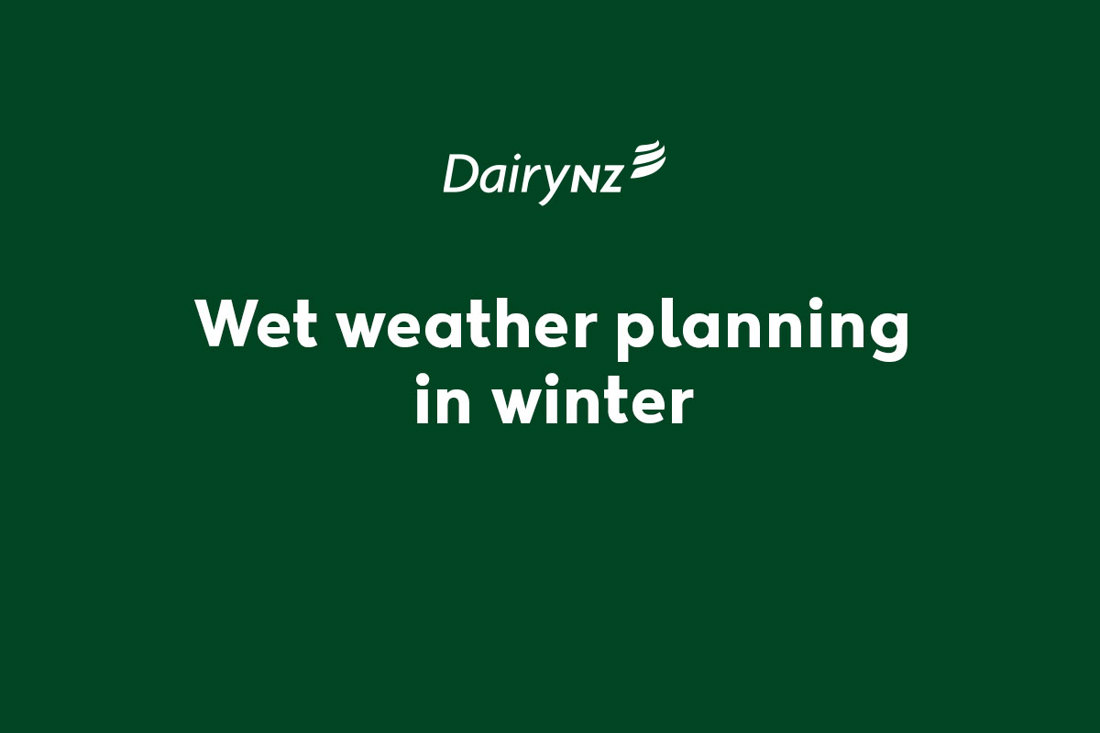
Bare ground continues to be a risk for overland flow of nutrients and soil from the paddocks after grazing has finished.
Minimise the time that the land is cultivated or ploughed without being sown.
Establish new pasture or a catch crop to reduce overland flow risk. Consider planting a catch crop to take up some of the urinary nitrogen left from the previous winter grazing. Catch crops can be a high-yielding part of the crop rotation.
Maintain the grass buffers around waterways (including drains) and swales to ensure soil is not lost from the paddock.
Once you have set your grazing plan you may like to visit cow health during winter.
Now’s the perfect time to check in, plan, and set up for a strong season. We’ve pulled together smart tips and tools to help you stay ahead all winter long.
Whether you prefer to read, listen, or download handy guides, we’ve got you covered with trusted tools to support your journey every step of the way.
Put our proven strategies and seasonal tools to work. Boost production, support animal health and watch your profits hum.
Tools that are backed by science, shaped by farmers and made for this season.
That’s Summer Smarts.